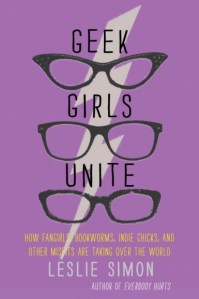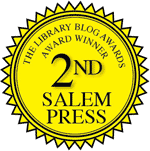 Nathaniel from Circulation Services shares this review.
Nathaniel from Circulation Services shares this review.
“Gentle reader; less-than-gentle reader; kind, clumsy, unfocused, slightly desperate reader… this book is for you.”
This isn’t the kind of book I usually read. It’s definitely not the kind of book I usually review. But my parents have told me (politely, but firmly) to get my boxes of stuff out of their garage, so I’ve found myself turning to books like Unstuff Your Life! in hopes they’ll help me out.
Surprisingly, they do! And of the ones I’ve read, Mellen’s book has stuck out for me in that it offered a lot of good-humored, practical advice, useful even for a twenty-something who lives in a small apartment.
Andrew Mellen is a professional organizer. He works with clients ranging from business owners to homemakers, and in his book he writes as though you, the reader, are one of his clients and he’s working through everything with you. His focus is on the psychological causes of clutter, and he makes a point of reiterating, “You are not your stuff.” He asks questions that prompt you to think about the way you think about your possessions. He reminds you that you can’t take it with you. He relates his conversations with other clients and shows how they worked through their mental stumbling blocks.
You might be thinking “Wait, I thought you said practical advice?” Well, he gives you that as well. The book is separated into specific areas to tackle – Kitchen, Paperwork, Mementos, and so on – and each section contains detailed instructions, checklists, and other information that you can use even if you don’t follow Mellen’s instructions to the letter. For instance: the cleaning tools you need before you start on a certain room, a checklist of things that might go in a car, and tips, like reminding you to sort stuff first and then buy storage, not the other way around.
The end goal is to get rid of clutter both in your space and your mind, so you can focus on you and your life. As Mellen says “I don’t think paying bills or filing papers or cleaning out the junk drawer is or should be that important. The messes that surround you are keeping you from what is important.”
If you have a garage full of boxes to deal with (or any clutter problem) and want some help with it, Unstuff Your Life! is a solid choice.
Check the WRL catalog for Unstuff Your Life!





 I have tried gardening on several continents with many climates and soil types. I soon learned that a plant that grows well in one place may get resentful and sulk — or outright die— in another. That is why gardening books that address local conditions are spectacularly useful. Here in southeastern Virginia we are well served by
I have tried gardening on several continents with many climates and soil types. I soon learned that a plant that grows well in one place may get resentful and sulk — or outright die— in another. That is why gardening books that address local conditions are spectacularly useful. Here in southeastern Virginia we are well served by 









 This is my favorite exercise video, not only for its glorious setting and background music, but because I can actually do each exercise, all the way through from beginning to end, without wasting precious time or feeling hopelessly out of shape. I feel great afterwards, especially if starting my day. Now, that does not mean it lacks challenge for intermediate yogis, or that it’s appropriate for a beginning Yoga student. In fact, this program is best utilized by those who’ve received sound one-on-one or group instruction on the basic movements of Yoga. You want to make sure that you’re using proper form and posture, so as to prevent back injury or pulled tendons, etc…, and have received sound feedback and correction from a wise instructor. The most important thing I’ve learned about Yoga is never to feel you must compete with others, simply to improve yourself gradually at your own pace. There are always modifications and props to help you manage more difficult poses until your body gains the flexibility it needs to stretch as well as those featured in videos like this most awesome one.
This is my favorite exercise video, not only for its glorious setting and background music, but because I can actually do each exercise, all the way through from beginning to end, without wasting precious time or feeling hopelessly out of shape. I feel great afterwards, especially if starting my day. Now, that does not mean it lacks challenge for intermediate yogis, or that it’s appropriate for a beginning Yoga student. In fact, this program is best utilized by those who’ve received sound one-on-one or group instruction on the basic movements of Yoga. You want to make sure that you’re using proper form and posture, so as to prevent back injury or pulled tendons, etc…, and have received sound feedback and correction from a wise instructor. The most important thing I’ve learned about Yoga is never to feel you must compete with others, simply to improve yourself gradually at your own pace. There are always modifications and props to help you manage more difficult poses until your body gains the flexibility it needs to stretch as well as those featured in videos like this most awesome one.

